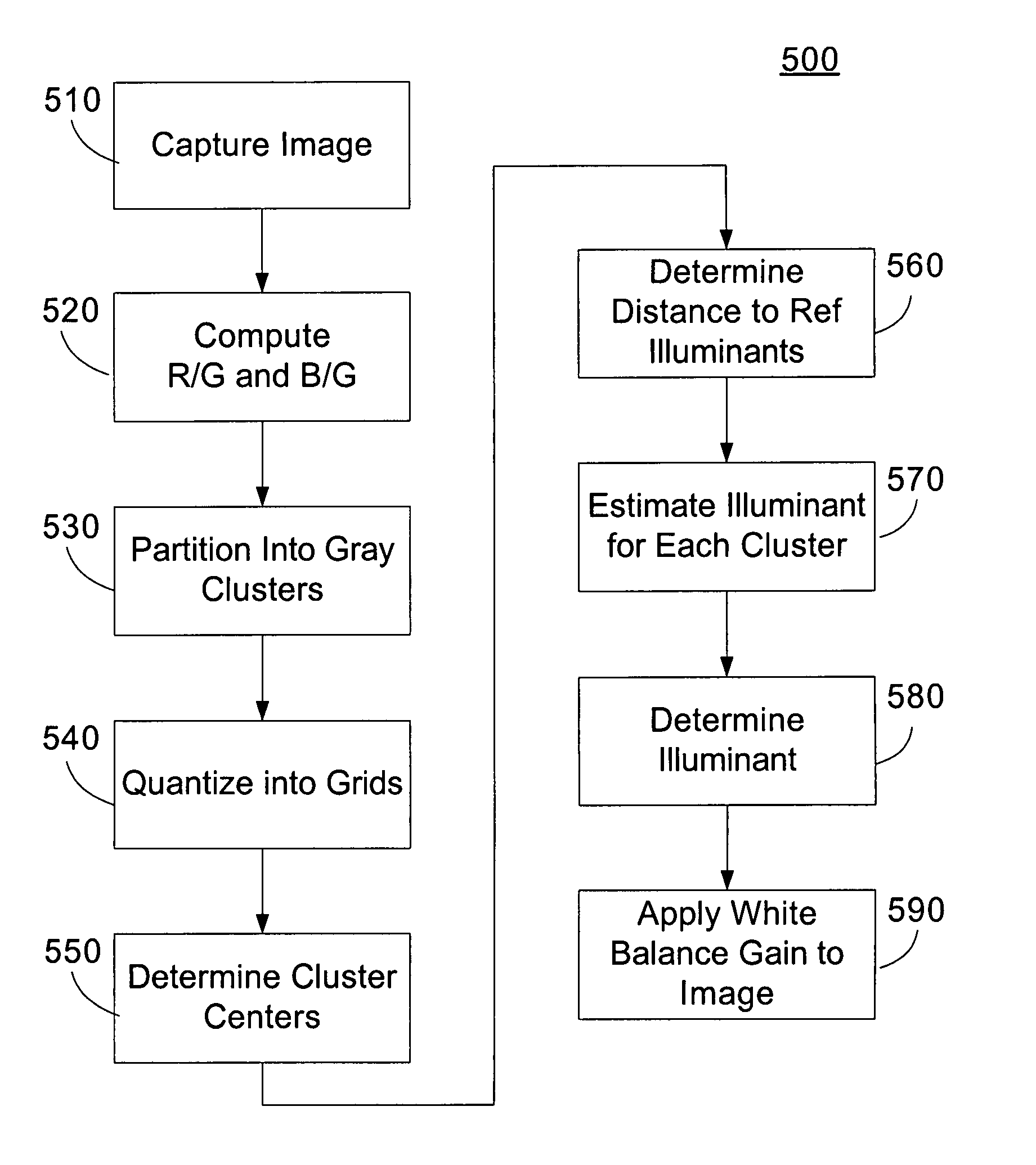Automatic white balance method and apparatus
a white balance and automatic technology, applied in the field of automatic white balance methods and apparatuses, can solve the problems of reducing image quality, affecting the accuracy of real-world images, and affecting the quality of images captured,
- Summary
- Abstract
- Description
- Claims
- Application Information
AI Technical Summary
Benefits of technology
Problems solved by technology
Method used
Image
Examples
Embodiment Construction
[0017] Gray world assumption can form the basis for performing white balance in digital photography. It has been observed among a large collection of photos that the average of the colors of pixels in an image is roughly gray. Although there are exceptions depending on the scene, the gray world assumption works quite well and offers a reliable basis for performing white balance. The Automatic White Balance (AWB) method and apparatus disclosed herein are based on the gray world assumption combined with an outlier removal. A digital camera or some other image processing device can be configured to perform the AWB methods described herein.
[0018] The methods are described in reference with an image capture device, such as a digital camera. However, there is no requirement that the image capture sensor be implemented within the device. Indeed, an electronic device can be configured to perform the AWB method on remotely captured images.
[0019] The digital camera can initially divide the ...
PUM
 Login to View More
Login to View More Abstract
Description
Claims
Application Information
 Login to View More
Login to View More - R&D
- Intellectual Property
- Life Sciences
- Materials
- Tech Scout
- Unparalleled Data Quality
- Higher Quality Content
- 60% Fewer Hallucinations
Browse by: Latest US Patents, China's latest patents, Technical Efficacy Thesaurus, Application Domain, Technology Topic, Popular Technical Reports.
© 2025 PatSnap. All rights reserved.Legal|Privacy policy|Modern Slavery Act Transparency Statement|Sitemap|About US| Contact US: help@patsnap.com



